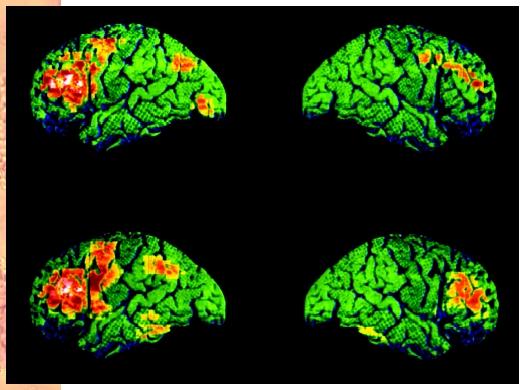Psychiatric Disorders, Biology of
Mental illnesses affect millions of people each year, and billions of dollars are spent on their treatment and legal fees in the United States alone. Even

Humans and the human brain are complex entities. Humans are affected not only by their internal environment (biology) but by the external environment as well. There is no ethical method of separating one from the other when studying humans. Most researchers agree that in the "nature versus nurture" debate, both heredity and environment play a significant role in the development of human personality, whether "normal" or "abnormal."
Mental health disorders are classified into groups with some overlap. The major groups of disorders as they are classified are: anxiety, bipolar, borderline personality, depression, obsessive-compulsive, phobic, narcissistic, schizophrenic, substance abuse, and eating disorders. This article focuses on three of the more common and devastating ones.
Schizophrenia
Schizophrenia is a group of disorders characterized by some form of psychosis or disconnected thought processes. The symptoms associated with schizophrenia vary, and can affect thinking, behavior, and emotions. Schizophrenics suffer from delusions, hallucinations , and/or emotional unresponsiveness. Many people have the misconception that people suffering from schizophrenia have "split personalities," which is not the case. This misconception probably arose because some patients may hear voices that seem to arise from inside the head.
It is estimated that about 1 percent of the world population suffers from schizophrenia. The disease usually first becomes evident in men between the ages of fifteen and twenty-five, and in women between twenty-five to thirty-five. It usually starts slowly and progresses over time to a severely disabling state. While no single factor has been identified as causing schizophrenia, research has shown that there may be a strong genetic predisposition for the disease. Additionally, there may be structural differences in the schizophrenic brain. This group of disorders is now recognized officially as a brain disorder instead of a psychological problem. Current treatments include medications, community support services, and electroshock therapy.
Bipolar Disorder
The defining characteristic of bipolar disorder (formerly called "manicdepressive" disorder) is intense mood swings. During the manic phase of the disease, the person experiences a state of extreme euphoria (feeling good). He or she has bursts of energy or may become highly irritable. During the depressive phase, the person becomes increasingly despondent and inconsolable.
It is estimated that between 15 and 20 percent of those with untreated bipolar disorder commit suicide, usually during a depressive cycle. Research has demonstrated a genetic link between this disorder and genes on chromosomes 18 and 21, though the significance of this is not fully understood. Treatment for bipolar disorder includes behavioral therapy, medications, and close supervision or support, especially during depressive phases.
Substance Abuse
Substance abuse is defined as the maladaptive negative pattern of substance use that leads to impairment or distress. Estimates for the costs of substance abuse disorders on society are staggering and range from $117 billion to $235 billion per year. The personal costs to those afflicted are numerous as well. These disorders often cause severe impairments and complications. Those afflicted may have a deterioration of their general health because of malnutrition and poor hygiene. They are more likely to suffer from trauma and sudden death, to contract transmittable or communicable diseases, and to suffer from toxic or allergic reactions to ingested substances. Substance abusers are more likely than nonabusers to exhibit increased levels of aggression and violence, which lead to legal involvement.
The biological research on substance abuse includes studies on genetics and the physiology of the brain. Results are inconclusive, but there may be a genetic component in some forms of alcoholism. Current studies are looking at the functioning of the brains of addicts in comparison to nonaddicts. Initial reports show that there are some structural differences as well as some differences in the ways the brain uses certain neurotransmitters , such as dopamine and serotonin.
Substance abuse is often a comorbidity (simultaneous occurrence of two or more disorders) associated with many other mental illnesses. In such cases, both the underlying psychiatric disorder and the substance abuse must be treated in order to achieve remission. There are many treatment methods, some controversial, for substance abuse. All claim therapeutic success, but many lack objective substantiation. Treatments can include therapy and/or medications and are most successful when used in combination.
SEE ALSO Alcohol AND Health ; Brain ; Neurologic Diseases
Leslie R. Carlson
Bibliography
Collins, R. Lorraine. Alcohol and the Family: Research and Clinical Perspectives. New York: The Guilford Press, 1990.
Reid, William H., George U. Balis, and Beverly Sutton. The Treatment of Psychiatric Disorders. Levittown, PA: Brunner/Mazel Publishers, 1997.
Comment about this article, ask questions, or add new information about this topic: